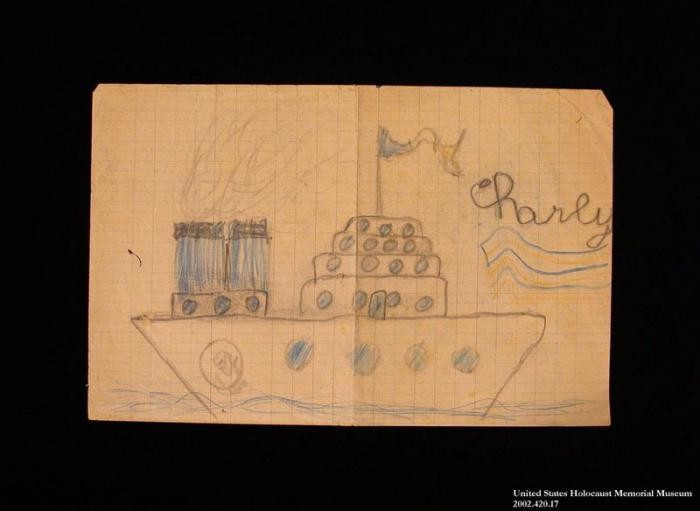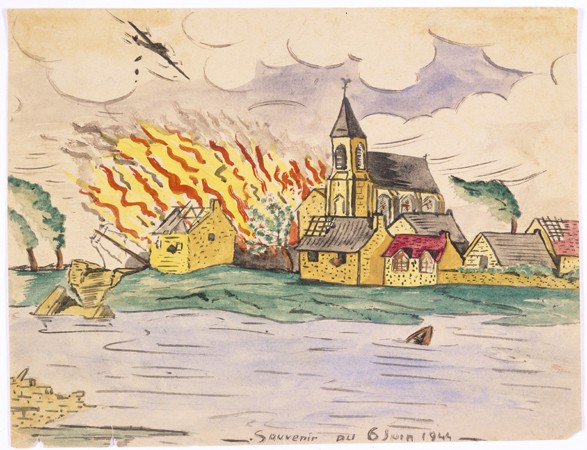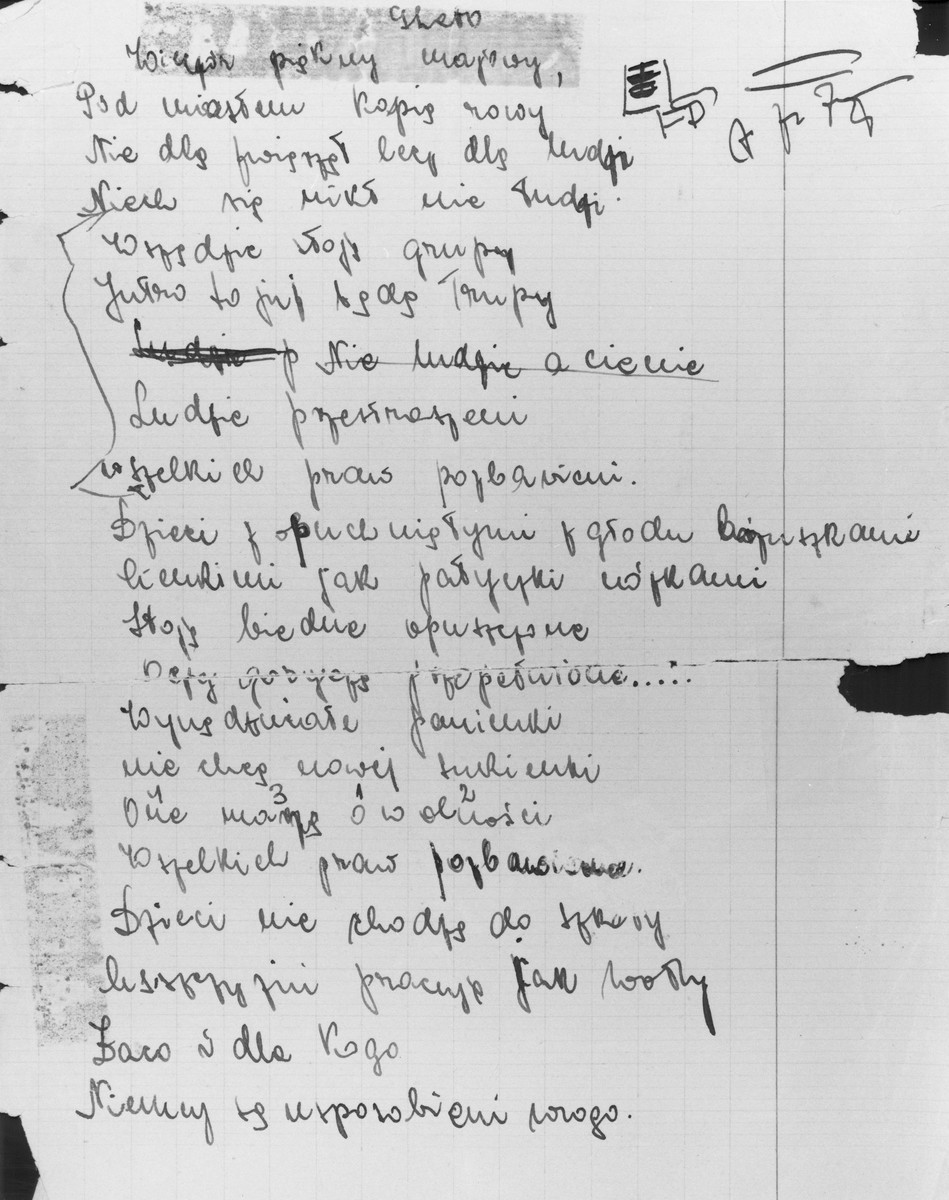
Hidden Children: Expressions
Throughout the Holocaust, Jewish artists and writers poignantly documented their experiences in camps, ghettos, forests, and hiding places. While the opportunities and materials to express their joys, pain, longings, anger, and sorrows in literary and artistic creations were severely limited, an impressive body of work, done by adults as well as children, has survived, even if the creators did not.
Though it will never be known how many Jewish children recorded their thoughts in writing, art, or music, dozens of diaries, hundreds of drawings, and some poems and songs have been preserved to provide a tiny glimpse into their personal worlds, leaving a lasting legacy of both their oppression and resilience.
Artwork
Jews of all ages across Europe produced thousands of paintings, drawings, and collages during the Holocaust. Works were made at the behest of Nazi overlords or initiated by relief agencies in internment camps or by Jewish functionaries in the ghettos. Many were secretly done in concentration camps.

The resultant artworks reflect the Jews' life experiences and are infused with despair, anger, or more rarely, hope. Some images were created by Jews living as non-Jews. One set of such images was created by Simon Jeruchim, living as a non-Jew in France. He was able to sketch nature and town in situ. Other images were created by hidden children who were unable to go outside. For example, Nelly Toll was hidden in a Lvov apartment. She drew from her memories or from the glimpses of life she witnessed through her window.
Diaries
Diaries, among the most intimate forms of writing, record innermost thoughts, hopes, fears, and aspirations. They generally are not meant for the public or prying eyes. For a hidden child, however, a diary's personal nature presented a serious danger. A detail about one's real family or identity could betray its author as well as his or her rescuer. While not all hidden children were able or allowed to keep diaries, those that exist offer a fascinating glance into the mind and experiences of these youths.

Critical Thinking Questions
- Why were children especially vulnerable to Nazi persecution?
- What risks, pressures, and motivations confronted rescuers?
- What challenges faced hidden children and their families after liberation?
- Do children continue to be especially vulnerable in times of upheaval?

